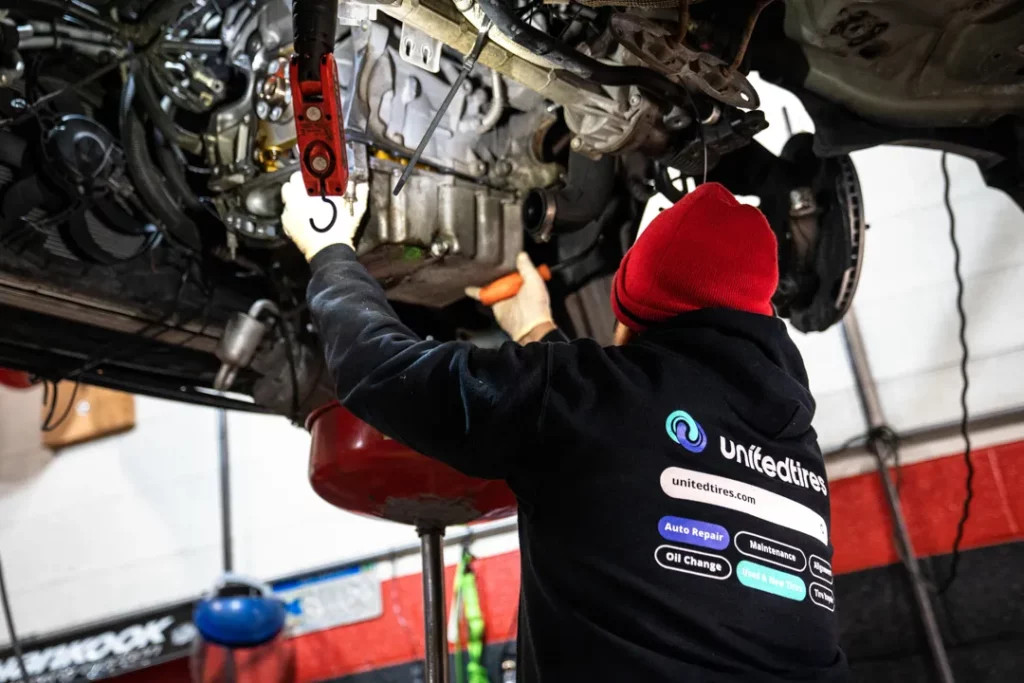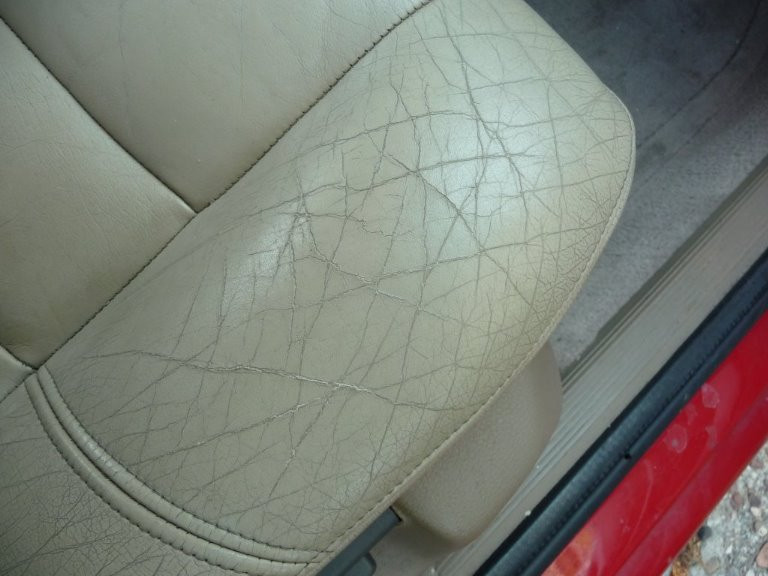**How to Fix Low Oil Pressure on a Car: A Comprehensive Guide**

Low oil pressure in your car can lead to significant engine damage, but understanding the causes and solutions can help you address the problem promptly. This comprehensive guide from CARDIAGTECH.NET will walk you through the signs, causes, and step-by-step solutions for fixing low oil pressure, ensuring your engine stays healthy and performs optimally. By understanding these issues, you will be empowered to troubleshoot effectively and maintain your vehicle with confidence.
1. Understanding the Importance of Engine Oil and Pressure
Why is maintaining proper oil pressure so critical for your vehicle’s engine?
Engine oil is the lifeblood of your car, lubricating the many moving parts within the engine to prevent grinding and friction. According to a study by the University of Michigan Transportation Research Institute, proper lubrication can extend engine life by up to 50%. To do its job effectively, engine oil needs to flow freely under sufficient pressure. Low oil pressure means inadequate lubrication, leading to increased wear, potential engine damage, and expensive repairs. Think of it as the circulatory system of your car; without proper pressure, vital parts are starved and can fail.
2. Recognizing the Signs of Low Engine Oil Pressure
What are the key indicators that your car is suffering from low oil pressure?
Being able to identify early warning signs is essential for preventing long-term damage. Here are some common symptoms:
- Engine Noise: Unusual sounds like knocking or ticking coming from the engine indicate increased friction due to poor lubrication.
- Excessive Oil Consumption: Frequently needing to top up your oil suggests internal leaks or worn components causing increased oil usage.
- Exhaust Smoke: Blue smoke from the exhaust is a telltale sign that oil is leaking into the combustion chamber and burning, which can damage the catalytic converter.
- Oil Warning Light: The oil warning light illuminating on your dashboard is a direct indication of low oil pressure, though it could also indicate a faulty sensor in rare cases.
3. Exploring Vehicle Warning Systems
How do modern vehicles alert you to low oil pressure, and how do these systems work?
Modern vehicles use sophisticated systems to monitor and warn drivers about low oil pressure. These systems include:
- Oil Pressure Gauges: These gauges provide a real-time reading of your engine’s oil pressure. Mechanical gauges use a Bourdon tube that uncoils with pressure changes, moving a needle. Electrical gauges use a sensor that adjusts resistance in a circuit, which the gauge then translates into a pressure reading.
- Indicator Lights: When oil pressure drops below a specified level, a diaphragm in the oil pressure sensor closes a switch, completing an electrical circuit and turning on the oil pressure warning light.
4. Highlighting the Dangers of Low Engine Oil Pressure
What are the potential consequences of ignoring low oil pressure, and why is it essential to address the issue promptly?
Ignoring low oil pressure can lead to severe and costly engine damage. Here are some of the most significant risks:
- Premature Wear and Tear: Insufficient lubrication accelerates wear and tear on engine parts, significantly reducing their lifespan.
- Loss of Performance: Low oil pressure can result in reduced engine power, poor acceleration, and overall inefficiency.
- Engine Damage: Continuing to drive with low oil pressure can cause critical engine damage, including bearing failure, turbocharger damage (especially during cold starts), and potential engine seizure.
5. Identifying the Reasons for Low Engine Oil Pressure
What are the common causes of low oil pressure, and how do these issues affect engine performance?
Understanding the root causes of low oil pressure is crucial for effective diagnosis and repair. Here are some of the most common reasons:
5.1 Excessive Bearing Clearances
Why do worn bearings lead to low oil pressure, and what are the acceptable clearance ranges?
As engines age, bearing clearances can increase due to wear, leading to reduced oil pressure. Normal clearances range from 0.001 to 0.003 inches. According to a study by the Society of Automotive Engineers (SAE), clearances exceeding this range can significantly reduce oil pressure, leading to insufficient lubrication and increased friction.
5.2 Oil Pump Problems
What role does the oil pump play in maintaining oil pressure, and how does a failing pump affect engine lubrication?
The oil pump circulates oil throughout the engine. Worn gears or rotors reduce its efficiency, leading to lower oil output and pressure. As noted by the American Society of Mechanical Engineers (ASME), oil pumps are positive displacement pumps, meaning their output is directly proportional to their speed. A failing pump can severely impair engine lubrication, risking immediate damage.
5.3 Plugged Oil Pickup Screen
How does a clogged oil pickup screen affect oil flow, and what are the potential consequences for the engine?
 Plugged Oil Pickup Screen
Plugged Oil Pickup Screen
A plugged oil pickup screen restricts oil flow to the pump, causing it to work harder and less efficiently. This restriction can lead to an oil pressure drop and potential engine overheating due to inadequate lubrication. Regular maintenance, including cleaning or replacing the screen, can prevent these issues.
5.4 Weak or Broken Oil Pressure Relief Valve
What is the function of the oil pressure relief valve, and how does a malfunctioning valve affect oil pressure regulation?
The oil pressure relief valve regulates maximum oil pressure, preventing it from becoming too high. A weak or broken valve may open prematurely, failing to maintain proper pressure, which can lead to inconsistent lubrication and potential engine damage. According to engineering studies, a properly functioning relief valve is crucial for maintaining stable oil pressure across varying engine speeds.
5.5 Low Oil Level
Why does low oil level lead to low oil pressure, and what are the common causes of oil loss?
Low oil levels mean there isn’t enough oil in the sump for the pump to circulate effectively. This can cause the pump to draw in air, leading to oil aeration and reduced pressure. Oil leaks are a common cause of low oil levels. Regularly checking and topping up your oil is essential for maintaining proper oil pressure.
5.6 Contaminated or Low-Viscosity Oil
How do oil quality and viscosity affect oil pressure, and what are the consequences of using the wrong type of oil?
 Contaminated Oil
Contaminated Oil
Contaminated or low-viscosity oil cannot maintain proper pressure. Viscosity affects the oil’s resistance to flow. Lower-viscosity oils flow more easily but create less resistance and pressure. Using the wrong type of oil or dirty oil can lead to insufficient pressure and reduced lubrication effectiveness. According to the Petroleum Quality Institute of America (PQIA), using the correct oil viscosity is crucial for maintaining optimal engine performance and longevity.
5.7 Restricted Oil Flow
How do blockages in oil passages affect oil pressure, and what steps can be taken to prevent these issues?
Blockages or sludge buildup in the lubrication paths restrict oil flow, increasing pressure upstream but causing a drop in overall system pressure. Regular maintenance, including oil changes, can prevent these issues. Restricted flow can lead to localized overheating and wear, damaging engine components.
6. Step-by-Step Guide on How to Fix Low Oil Pressure on a Car
Now that we know the causes of low oil pressure, here’s how to fix low oil pressure on a car.
Step 1: Check the Oil Level
- Action: Use the dipstick to check the oil level. If it’s low, top it off with the recommended oil type for your vehicle. CARDIAGTECH.NET offers a variety of high-quality oils suitable for different engine types.
- Tools Needed: Oil, funnel, and rag.
- Estimated Time: 5-10 minutes.
Step 2: Inspect the Oil Filter
- Action: Remove the oil filter and inspect it for clogs or damage. Replace it with a new, high-quality filter from CARDIAGTECH.NET to ensure proper oil flow.
- Tools Needed: Oil filter wrench, new oil filter, drain pan.
- Estimated Time: 15-20 minutes.
Step 3: Check the Oil Pressure Sensor
- Action: Use a multimeter to test the oil pressure sensor. If it’s faulty, replace it. CARDIAGTECH.NET provides reliable sensors that ensure accurate readings.
- Tools Needed: Multimeter, wrench, new oil pressure sensor.
- Estimated Time: 20-30 minutes.
Step 4: Inspect the Oil Pump
- Action: Check the oil pump for wear or damage. If necessary, replace it with a new pump from CARDIAGTECH.NET to restore proper oil circulation.
- Tools Needed: Socket set, wrench, new oil pump, gasket.
- Estimated Time: 2-3 hours (professional installation recommended).
Step 5: Inspect Bearings
- Action: Check the engine bearings for wear. If they are worn, replace them. Contact CARDIAGTECH.NET for quality replacement bearings.
- Tools Needed: Socket set, torque wrench, new bearings, plastigauge.
- Estimated Time: 4-8 hours (professional installation strongly recommended).
Step 6: Check the Oil Pickup Tube
- Action: Inspect the oil pickup tube for clogs or damage. Clean or replace as necessary. CARDIAGTECH.NET offers replacement tubes to ensure optimal oil flow.
- Tools Needed: Socket set, cleaning solvent, new pickup tube (if needed).
- Estimated Time: 1-2 hours.
Step 7: Use the Correct Oil Viscosity
- Action: Ensure you’re using the oil viscosity recommended for your vehicle, as specified in your owner’s manual. CARDIAGTECH.NET offers a wide range of oil viscosities to meet your vehicle’s needs.
- Tools Needed: Appropriate oil viscosity.
- Estimated Time: 5 minutes (when changing oil).
Step 8: Professional Inspection
- Action: If the above steps do not resolve the issue, consult a professional mechanic. They can perform a more detailed inspection and address any underlying issues. CARDIAGTECH.NET can connect you with trusted mechanics in your area.
- Tools Needed: N/A.
- Estimated Time: Varies.
Table: Step-by-Step Guide to Fixing Low Oil Pressure
| Step | Action | Tools Needed | Estimated Time |
|---|---|---|---|
| 1. Check Oil Level | Use the dipstick to check the oil level. Top off if low with recommended oil. | Oil, funnel, rag | 5-10 minutes |
| 2. Inspect Oil Filter | Remove and inspect the oil filter for clogs. Replace with a new filter. | Oil filter wrench, new oil filter, drain pan | 15-20 minutes |
| 3. Check Oil Pressure Sensor | Use a multimeter to test the oil pressure sensor. Replace if faulty. | Multimeter, wrench, new oil pressure sensor | 20-30 minutes |
| 4. Inspect Oil Pump | Check the oil pump for wear or damage. Replace if necessary. | Socket set, wrench, new oil pump, gasket | 2-3 hours (pro recommended) |
| 5. Inspect Bearings | Check engine bearings for wear. Replace if worn. | Socket set, torque wrench, new bearings, plastigauge | 4-8 hours (pro strongly rec.) |
| 6. Check Oil Pickup Tube | Inspect the oil pickup tube for clogs or damage. Clean or replace. | Socket set, cleaning solvent, new pickup tube (if needed) | 1-2 hours |
| 7. Use Correct Oil Viscosity | Ensure you’re using the oil viscosity recommended in your owner’s manual. | Appropriate oil viscosity | 5 minutes (when changing oil) |
| 8. Professional Inspection | If issues persist, consult a professional mechanic for a detailed inspection. CARDIAGTECH.NET can connect you with trusted mechanics. | N/A | Varies |
7. How to Maintain Engine Oil Pressure
How can you ensure your engine maintains optimal oil pressure over the long term?
Maintaining proper engine oil pressure involves several key practices:
- Regular Oil Changes: Follow the manufacturer’s recommended oil change intervals. According to the Engine Oil Bible, regular oil changes are the single most important factor in extending engine life.
- Use the Correct Oil: Always use the oil viscosity recommended for your engine. Check your manufacturer’s handbook for specifications.
- Inspect and Replace Components: Regularly inspect the oil pump, oil pickup screen, oil filter, and pressure relief valve. Replace worn or damaged components promptly.
- Monitor Oil Pressure: Keep an eye on your oil pressure gauge or warning light and address any issues immediately.
8. Why Choose CARDIAGTECH.NET for Your Automotive Needs?
Why should you rely on CARDIAGTECH.NET for your automotive repair and maintenance needs?
At CARDIAGTECH.NET, we understand the challenges you face in your profession. Whether you’re a young technician just starting out, an experienced mechanic, or a garage owner, you need reliable tools and parts to do your job efficiently and effectively. Here’s how CARDIAGTECH.NET can help:
- High-Quality Products: We offer a wide range of top-quality oil filters, oil pressure sensors, oil pumps, and engine oils to keep your engine running smoothly.
- Expert Support: Our knowledgeable team can provide expert advice and support to help you diagnose and fix low oil pressure issues.
- Convenient Shopping: Our online store makes it easy to find and purchase the tools and parts you need, with fast shipping and reliable service.
Contact CARDIAGTECH.NET today at +1 (641) 206-8880 or visit our website at CARDIAGTECH.NET to learn more about how we can help you keep your car in top condition. You can also visit our store at 276 Reock St, City of Orange, NJ 07050, United States.
9. Frequently Asked Questions (FAQs)
Here are some frequently asked questions about low oil pressure, addressing common concerns and providing quick solutions:
9.1 What Should I Do If My Oil Pressure Light Comes On?
If your oil pressure light comes on, safely pull over and check your oil level immediately. If the oil level is low, add oil. If the light stays on, or the oil level is fine, have your car inspected by a mechanic.
9.2 Can Low Oil Pressure Cause Other Problems?
Yes, low oil pressure can lead to numerous engine problems, including increased wear, overheating, and engine damage. Addressing the issue promptly is essential.
9.3 How Often Should I Check My Oil Level?
You should check your oil level at least once a month and before any long trips.
9.4 What Type of Oil Should I Use?
Use the oil type and viscosity recommended in your vehicle’s owner’s manual. CARDIAGTECH.NET offers a wide range of oil types to meet your vehicle’s needs.
9.5 Can I Add Oil Additives to Improve Oil Pressure?
While some oil additives claim to improve oil pressure, it’s generally best to address the underlying cause of the problem rather than relying on additives. Consult a mechanic for professional advice.
9.6 How Can I Tell If My Oil Pump Is Failing?
Signs of a failing oil pump include low oil pressure, engine noise, and the oil pressure light illuminating. A professional inspection can confirm the diagnosis.
9.7 Is Synthetic Oil Better for Maintaining Oil Pressure?
Synthetic oil often provides better protection and maintains its viscosity better than conventional oil, which can help maintain oil pressure. However, always use the oil type recommended for your vehicle.
9.8 Can a Clogged Oil Filter Cause Low Oil Pressure?
Yes, a clogged oil filter can restrict oil flow and cause low oil pressure. Regular oil filter changes are essential.
9.9 How Long Can I Drive with Low Oil Pressure?
It is not recommended to drive with low oil pressure. Continuing to drive can cause significant engine damage.
9.10 How Much Does It Cost to Fix Low Oil Pressure?
The cost to fix low oil pressure varies depending on the cause of the problem. Simple fixes like an oil change or sensor replacement may cost a few hundred dollars, while more complex repairs like replacing the oil pump or engine bearings can cost thousands.
10. Maintain Engine Oil Pressure
Oil pressure is measured in pounds per square inch (psi) or kilopascals (kPa). For most engines, the oil pressure should typically range between 25 to 65 psi. So, if you get a reading significantly below this, you should investigate further.
Another important factor for maintaining proper pressure is the viscosity of your oil. It’s important you always use oil that meets your engine’s viscosity requirements – check your manufacturer’s handbook for specifications. For example, you might need to use higher-viscosity oil to avoid issues related to low oil viscosity, which can also lead to problems with low oil pressure.
According to recent data, problems with oil pressure and lubrication system failures are responsible for a substantial percentage of engine breakdowns, with low oil pressure being a major factor. This is why regular maintenance is essential. This should include oil changes and inspections of the oil pump, oil pickup screen, oil filter, and pressure relief valve.
Addressing your challenges:
- Physical Demands: Invest in ergonomic tools from CARDIAGTECH.NET to reduce strain and improve comfort.
- Constant Learning: Stay updated with the latest automotive technology through our informative resources and expert advice.
- Time Pressure: Use our efficient diagnostic tools and reliable parts to reduce repair times and increase productivity.
- Competition: Enhance your reputation and service quality with our high-quality tools and parts, ensuring customer satisfaction.
Take action now to ensure your engine stays healthy and performs optimally. Contact CARDIAGTECH.NET today to learn more about our products and services. Call us at +1 (641) 206-8880 or visit our website at CARDIAGTECH.NET.
11. Conclusion: Maintaining Your Engine’s Health
Addressing low oil pressure promptly is essential for maintaining your engine’s health and performance. By understanding the signs, causes, and solutions, you can take proactive steps to prevent costly damage and keep your vehicle running smoothly. Trust CARDIAGTECH.NET for all your automotive needs, providing you with the tools, parts, and expertise to keep your engine in top condition.
Remember, your engine’s health is in your hands. Take the necessary steps to maintain proper oil pressure, and you’ll enjoy reliable performance for years to come.






